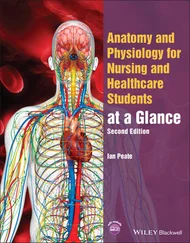The National Institute for Health and Care Excellence (NICE) published guidance in 2014 that sets out evidence‐based guidance for staff‐to‐patient ratios in adult acute settings. Subsequently, many studies have tried to develop similar guidance for community nursing staffing levels.
Professor Alison Leary, Professor of Healthcare and Workforce Modelling at London South Bank University and Director of the QNI International Community Nursing Observatory (ICNO), states that, ‘District Nursing is easily the most complex nursing work I have ever observed’ (Queen’s Nursing Institute, 2014). There are multiple variables which impact upon the complexity of the care provided that are often unpredictable and therefore difficult to measure, which makes safe staffing in community nursing very difficult to define. The Queen’s Nursing Institute’s view is that it is usually more appropriate to speak of ‘safer caseloads’ rather than ‘staff‐to‐patient ratios’ in attempting to determine the workforce needs in the community.
District nurses often describe their service as acting like a sponge; that is, under most circumstances district nursing services do not refuse referrals, but find ways of visiting all patients in need. As such, the allocation of district nursing work is becoming increasingly challenging, not only because of the number of patients needing care but also due to the complexity of their needs. The demand has to be balanced with ensuring that the service is financially and operationally sustainable.
The process of caseload allocation
The process of work allocation involves the planning, organisation, coordination and delegation of visits to patients and other work required (Bain and Baguley, 2012) and although there have been a number of models developed to assist nurses with this process, often these will only meet local requirements. Work commissioned by NHS England (NHSE/QNI, 2014) has identified that several allocation systems are available, but most of these were developed around local requirements and were operational in nature, focusing on scheduling, caseload allocation or validation and assurance of performance data.
In determining safe caseloads in the community, many factors must be considered. First, the skill mix of the community nursing teams must be reviewed. Second, the capacity of community nursing teams must be addressed and there are multiple issues that impact upon their efficiency and effectiveness. In order to collate the information required to determine what safe caseloads might look like, commissioners and service planners utilise software tools. However, currently not all tools that are in use across the NHS cover all metrics required. There are multiple software platforms in use across the NHS, and in many cases their reliability and validity has yet to be evidenced.
The National Quality Board (2018) has reviewed multiple factors that influence safe caseloads. This document has been designed to break down those influencing factors to evaluate the evidence base leading to a series of recommendations ( Box 11.1). Allocation of work forms part of caseload management alongside service planning and cannot be treated in isolation. This is illustrated in Figure 11.1(National Quality Board, 2018). Boxes 11.2and 11.3also list some key factors that need to be considered when allocating workload. In addition to the considerations in Box 11.1, there is a need to ensure that the caseloads are efficient, as a result of being robustly reviewed (Grundy and Wheeler, 2018).
The King’s Fund (2016) has recommended that more robust national data on capacity and demand in district nursing services is needed, in order that the gaps in capacity and demand can be addressed. The King’s Fund identified nine characteristics of good‐quality care in district nursing ( Figure 11.2and Box 11.2). This should provide some guidance to both commissioners and front line staff when considering how best to manage caseloads to ensure safe and effective care.
Of all the considerations to be taken into account when allocating workload, having an adequate workforce must be a priority. In the absence of a robust dependency classification system, allocation of team members to deliver care in patients’ homes and communities relies on professional judgement. Although there may be software systems to support allocation, it is often much more complex than simply allocating a time slot for a particular activity. Given the many variables affecting nursing in the community setting, the issue of safer caseloads is an ongoing project. The Specialist Practitioner Qualification prepares nurses to lead and manage caseloads effectively and therefore it is vital that these programmes continue to be delivered.
Конец ознакомительного фрагмента.
Текст предоставлен ООО «ЛитРес».
Прочитайте эту книгу целиком, купив полную легальную версию на ЛитРес.
Безопасно оплатить книгу можно банковской картой Visa, MasterCard, Maestro, со счета мобильного телефона, с платежного терминала, в салоне МТС или Связной, через PayPal, WebMoney, Яндекс.Деньги, QIWI Кошелек, бонусными картами или другим удобным Вам способом.












